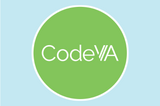
See computer science integration opportunities in middle school music in this crosswalk of the two disciplines.
- Subject:
- Computer Science
- Music
- Material Type:
- Teaching/Learning Strategy
- Author:
- CodeVA Curriculum
- Valerie Fawley
- Date Added:
- 03/28/2023

See computer science integration opportunities in middle school music in this crosswalk of the two disciplines.
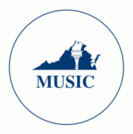
The lesson explores Appalachian music within Virginia, focusing on simulating the acoustical recording process to convey technical challenges and artistic considerations. Modeled after the Bristol Sessions of 1927, conducted by Ralph Peer for the Victor Talking Machine Company, the session primarily used acoustical recording technology prevalent at the time. Performers sang or played instruments into large recording horns, transmitting sound vibrations to a cutting stylus, which etched onto a master disc. Despite limitations in fidelity and dynamic range, the Bristol Sessions captured the essence of early country, blues, and Appalachian music, significantly influencing American popular music's trajectory.

Lesson Plan and activities for a class on Origins of Hip-Hop. Links to resources, Google Docs, PDF activity download.Journal entry warm-upGoogleSlides on the history of hip-hop and prominent figures in the movementGroup/individual activity on Grandmaster Flash's "The Message"Extension activity with online links for students to create their own beats
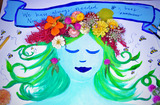
Learn about visual and performing artists. They often use their creativity to raise their voices and share lessons, stories, and important ideas with the world. In this episode of The Creative Corner, two artists from Richmond, Virginia help us explore how art sparks crucial conversations. Public artist Hamilton Glass shares how (and why) he gathered a group of artists to paint murals with a message all across the city after some challenging current events, and musician Victor Haskins talks about storytelling as human nature — and why sound and performance tell stories so well. Then you’re invited to share your own voice through a poster project!
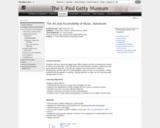
Students will learn about the jazz singer Billie Holiday and the sociohistorical context in which she performed. They will learn how discriminatory statutes (called Jim Crow laws) affected daily life. They will also analyze how movement is created in photographs and the effect of a photographer's point of view on composition. Finally, students will photograph a musician, paying attention to what can be communicated through point of view.
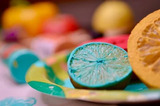
Join Lauren Paullin as she conducts a scavenger hunt around her house to find all kinds of things that can be used to make pictures, prints, paints, and even musical instruments! Learn how to make a mixed media collage and print it with fruits and vegetables. Learn from New Orleans-based musician, artist, and cultural diplomat Charles Burchell how to turn ordinary objects like glasses, wood, plastic, and even paper into musical instruments. Developed for grades 4 through adults.
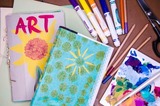
Learn about the artwork that is created and kept close to the artist’s heart, and other artwork is made to be shared! Dig into some DIY book-making, participate in a secret community art project, and learn how artists and musicians build unity through Afro-Caribbean dance styles on a trip to Dogtown Dance Theatre — all on this episode of The Creative Corner.The Creative Corner is a weekly TV show for elementary through high school students and adults. Each episode explores new topics through the lens of the visual and performing arts, with fun at-home activities that align with Virginia's Standards of Learning, and special interviews with guests from around the globe. Developed for 4th grade through adults.

Explore how writers use storyboards to visualize books and movies, learn how actors train and use fight choreography to portray stories on stage, and become a work of art yourself on this episode of The Creative Corner. Everyone loves a good story.
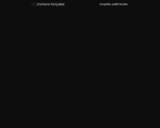
Chansons françaises is the integrated music component of Français interactif. Chansons features a French or Francophone song, related to each chapter's cultural or pedagogical focus, presented via audio or video. Accompanying pdfs provide additional information, as well as comprehension exercises. Songs act as a portal to various Francophone cultures and musical genres. Aural comprehension and study of lyrics afford students practice with culturally authentic text and expression. Students discover yet another reason to be passionate about studying French!

Compare and Contrast with Music is a cross-curricular lesson designed by an Elementary Music teacher to support Language Arts instruction. Created By: Joshua Wright Powhatan County Public Schools.
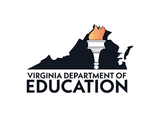
Using predetermined musical elements, either rhythmic or melodic, students compose a “music composition code” in small groups. Laying the individual lines of “musical composition code” on the ground, students add directional arrows to direct performers to the next line of “code” to create a larger musical composition.
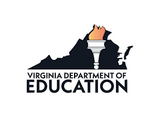
Students learn to add music note values, and create compositions in 4/4, common time. Using traditional music notation students may choose to compose for voice or drums. This ruler composition activity uses a familiar math visual to help students see the length or duration of musical notes. Final compositions can be emailed to the teacher for review.

Online chord looping stations and drum machines such as those found on One Motion allow students the opportunity to engage in music creation in a way that is accessible to them without a large theoretical music background. Students can use their intuition and their ears to create music in innovative ways online.
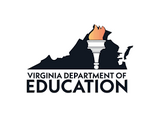
Students use a digital collaboration board to share their “wonderings” about the songs they are listening to in class. The teacher selects 3-4 songs from various cultures. Students add sticky notes to the collaboration board using appropriate music terminology, and share their musical preferences in a respectful manner. Students can have the ability to like or comment on each other’s posts and engage in meaningful conversations in small groups after sharing their wonderings digitally.
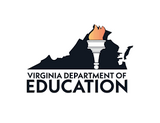
Collaborative boards allow students to share ideas and engage with each other via an online platform. When students are learning about the creative process of music creation and composition, students can use an online collaborative board to share lyrics and co-create a song together.
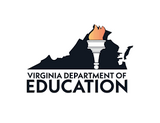
Students use digital research skills to Find Basic Information (F.B.I.) about a composer on websites such as Classic for Kids: Composer Explorer. Students learn about a specific composer, or composers from a specific geographic area, culture, genre, or time period. After gathering information, students write and produce a news program or podcast based on their research.

Students use aural skills to dictate various rhythmic, melodic and/or rhythmic-melodic patterns performed by a teacher. Students should be encouraged to perform their transcription to analyze and compare with the teacher given “prototype”. Based on trial and error, students can reflect and revise their answers many times until they are ready to finalize their student “copy”.
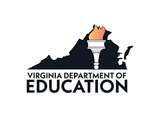
Students explore the connection between music and art by listening to a painting created by the artist V. Kandinsky, using Google arts and Culture: Play a Kandinsky. Students use problem solving skills to explore what Kandinsky might have heard when painting “Yellow-Red-Blue” and bring to life his theory on synesthesia and abstract art. Students explore Kandinsky’s theories on color and sound and the relationship between shapes. After exploring the Kandinsky painting, students create their own paintings in the style of Kandinsky, and explain the color and sound relationships that exist in their original work.
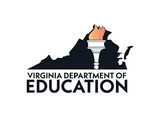
Students use NYU Music Experience Design Lab: Groove Pizza to create drum and unpitched instrument rhythms with math-inspired concepts. Students create grooves using math concepts like shapes, angles and patterns. The circular rhythm app allows students to begin exploration with “specials” pizza presets and add/remove “toppings” to adjust the groove. Final student creations can be shared as a link, downloaded as a .wav or .midi file, and converted to external music notation software.

Students work to create a new original composition using ‘samples'’ or snippets of other students' work. Students create a consent form to collect permission from the original creators of each sample. After choosing which instrument to perform the finished composition on, and practicing, students perform the finished product for the class. A possible extension could be to include opportunities for student collaboration in the form of revisions and edits.